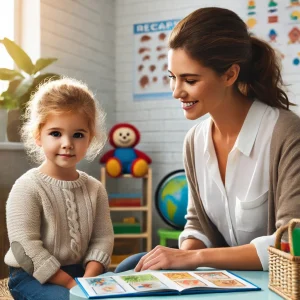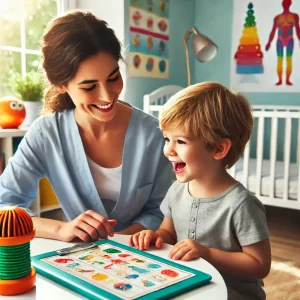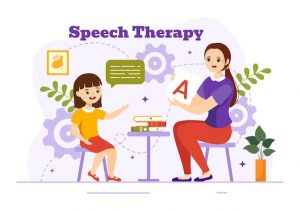Help Your Child Develop a Strong Pencil Grasp
Last Updated: June 10, 2024
Have you ever watched your child hold a pencil and wondered if they’re doing it right? Pencil grasp, the way your child holds their pencil, is a crucial skill that impacts their ability to write efficiently and comfortably. Understanding pencil grasp can help you support your child’s writing development, ensuring they progress smoothly through the stages of holding and maneuvering a pencil.
Why is Pencil Grasp Important?
Pencil grasp plays a vital role in writing development. A good pencil grasp allows your child to move their fingers freely, control the pencil with precision, and complete writing tasks without getting tired. It helps them write neatly and comfortably, preventing hand fatigue and frustration.
The Progression of Pencil Grasp in Children
Children typically go through several stages of pencil grasp development. These stages are:
- Primitive Grasps: Early grasps involving the whole hand.
- Transitional Grasps: Intermediate grasps where the wrist and forearm start to get involved.
- Mature Grasps: Advanced grasps that use fingers for precise movements.
As they grow, children naturally transition from one stage to the next, each stage building on the skills developed in the previous one. It’s important to remember that every child develops at their own pace, and variations in their progression are perfectly normal.
Understanding Pencil Grasp Development
Pencil grasp development in children typically follows a natural progression that can be categorized into three main stages: primitive, transitional, and mature grasps. Understanding these stages can help you support your child as they learn to write.
Primitive Pencil Grasps
The first stage of pencil grasp development is known as primitive grasp. These grasps are often seen in toddlers and young children and involve the whole hand or fist.
Transitional Pencil Grasps
As children grow, they move into the transitional stage. During this phase, they begin to use their fingers more, developing the fine motor skills necessary for more advanced grasps.
Mature Pencil Grasps
The final stage is the mature grasp, where children use their fingers with precision to control the pencil. This stage allows for efficient and comfortable writing, which is essential for school tasks and everyday activities.
Pencil Grasp Development Stages
| Stage | Grasp Type | Age Range | Description |
|---|---|---|---|
| Primitive | Palmer Supinate Grasp | 12-18 months | Whole hand grasp. The child holds the crayon with their whole hand, similar to holding a paint stirrer. Movements come from the shoulder. |
| Primitive | Digital Pronate Grasp | 2-3 years | Crayon held with fingers pointing down. The child holds the crayon with their fingers pointing towards the paper, using the thumb and forefinger to grasp. |
| Transitional | Quadrupod Grasp | 3-4 years | The thumb, pointer, middle, and ring fingers hold the crayon. This grasp provides more stability and control, allowing the fingers to work together. |
| Transitional | Static Tripod Grasp | 3.5-4 years | The thumb, pointer, and middle fingers hold the pencil. The pencil rests on the last joint of the middle finger, with movements of the wrist and forearm. |
| Mature | Dynamic Tripod Grasp | 4-7 years | The thumb, pointer, and middle fingers manipulate the pencil. This grasp allows for precise and fluid finger movements, making it efficient for writing. |
| Mature | Lateral Tripod Grasp | 4-7 years | Thumb wraps around the pencil. The thumb presses against the pencil and may bend over it, providing stability but possibly restricting finer movements. |
| Mature | Dynamic Quadrupod Grasp | 4-7 years | Similar to dynamic tripod but includes the ring finger. This grasp involves the thumb, pointer, middle, and ring fingers, offering additional stability. |
| Mature | Lateral Quadrupod Grasp | 4-7 years | Thumb wraps around the pencil, using pointer, middle, and ring fingers. The thumb provides a secure hold, while the fingers control the pencil. |
Also Read: Learning Techniques for Students
Primitive Pencil Grasps
Palmer Supinate Grasp (12-18 months)
At around 12 to 18 months, you’ll notice your child using the Palmer Supinate Grasp. In this stage, they hold the crayon or pencil with their whole hand, similar to how they would grip a paint stirrer. The movement comes from their shoulder, which allows for broad strokes. This grasp is typical for young toddlers as they begin exploring drawing and scribbling.
Digital Pronate Grasp (2-3 years)
By the age of 2 to 3 years, children often transition to the Digital Pronate Grasp. In this stage, they hold the crayon with their fingers pointing down towards the paper while their thumb and forefinger grasp the crayon. This grasp allows for more control than the Palmer Supinate Grasp and is a significant step towards developing more precise hand movements.
Transitional Pencil Grasps
As children progress in their pencil grasp development, they enter the transitional stage. During this phase, they begin to refine their hand movements, making use of their fingers, wrist, and forearm to gain better control over the pencil. This stage typically occurs between the ages of 3 to 4 years.
Quadrupod Grasp (3-4 years)
In the Quadrupod Grasp, children use their thumb, pointer, middle, and ring fingers to hold the crayon or pencil. This grasp provides more stability and control compared to the primitive grasps. The fingers work together to maneuver the writing tool, allowing for more precise movements. This grasp is a common step before children move on to a more refined grip.
Static Tripod Grasp (3.5-4 years)
Around the age of 3.5 to 4 years, many children transition to the Static Tripod Grasp. In this grasp, the child uses their thumb, pointer finger, and middle finger to hold the pencil. The pencil rests on the last joint of the middle finger, while the ring and pinkie fingers are tucked into the palm. This grip allows for better control and is often seen as a precursor to the mature grasps. Movements of the wrist and forearm help control the pencil, setting the stage for more dynamic finger movements in the future.
Mature Pencil Grasps
As children continue to develop their fine motor skills, they eventually adopt mature pencil grasps. These advanced grasps allow for precise control and efficient writing. Typically, these grasps are developed between the ages of 4 to 7 years.
Dynamic Tripod Grasp (4-7 years)
The Dynamic Tripod Grasp is one of the most common mature grasps. In this grasp, the thumb and pointer finger hold the pencil while the pencil rests on the last joint of the middle finger. The fingers manipulate the pencil with ease, allowing for smooth and precise movements. This grasp is often considered the ideal pencil grip due to its efficiency and comfort.
Lateral Tripod Grasp
In the Lateral Tripod Grasp, the thumb wraps around the pencil and presses it against the side of the pointer finger. The tip of the thumb may bend over the pencil in a “wrapped” position. This grasp can provide stability but may limit some finger movements compared to the dynamic tripod grasp.
Dynamic Quadrupod Grasp
Similar to the dynamic tripod grasp, the Dynamic Quadrupod Grasp includes the ring finger in addition to the thumb, pointer, and middle fingers. This grasp offers additional stability and control, allowing for fluid movements and precise pencil manipulation.
Lateral Quadrupod Grasp
The Lateral Quadrupod Grasp is akin to the lateral tripod grasp but involves the pointer, middle, and ring fingers on the pencil shaft. The thumb wraps around the pencil, providing a secure hold. This grasp can be effective for children who find the extra finger provides more stability during writing tasks.
Functional Pencil Grasps
It’s important to understand that functional pencil grasps can vary significantly from child to child. While some grasps are more common, others may be just as effective for individual children. The key is that the grasp allows the child to write comfortably and efficiently without pain or excessive fatigue.
Various Functional Grasps
Here are some other functional grasps that might differ from the more traditional ones but are still effective:
- Thumb Wrap Grasp: In this grasp, the thumb wraps around the pencil, providing a secure hold. This can offer additional stability for some children, although it may restrict finer movements.
- Thumb Tuck Grasp: This grasp involves the thumb being tucked under the index finger. It can be functional for some children, though it may not be as efficient for precise movements.
- Inter-Digital Brace Grasp: The pencil is held between the fingers, with the thumb and one or more fingers stabilizing it. This can be a comfortable and functional grasp for some children.
- Finger-Wrap Grasp: In this grasp, one or more fingers wrap around the pencil. While it may look unconventional, it can still allow for effective writing if the child finds it comfortable.
Helping Your Child Develop a Functional Pencil Grasp
Supporting your child in developing a functional pencil grasp involves a combination of patience, practice, and proper guidance. Here are some tips and strategies for parents and teachers:
Tips and Strategies
- Encourage Fine Motor Activities:
- Activities like playing with playdough, stringing beads, and completing puzzles can strengthen the small muscles in the hands and fingers, which are essential for a good pencil grasp.
- Use Appropriate Writing Tools:
- Providing children with thicker pencils or crayons can help them grasp these tools more easily. Shorter pencils or broken crayons can also encourage the use of fingertips rather than the whole hand.
- Practice Proper Hand Positioning:
- Teach your child how to hold the pencil correctly by modeling the grip and gently guiding their fingers into place. Consistent practice will help them develop the correct habit.
- Incorporate Sensory Play:
- Sensory activities like sand play, finger painting, and using squirt bottles can enhance sensory awareness and improve hand control, contributing to better pencil grasp.
- Make Writing Fun:
- Engage your child in fun, writing-related activities such as drawing, coloring, and tracing shapes. Using their favorite characters or themes can make these activities more enjoyable.
- Provide Positive Reinforcement:
- Praise your child’s efforts and progress, no matter how small. Positive reinforcement can boost their confidence and encourage them to keep practicing.
Importance of Practice and Proper Guidance
Consistent practice and proper guidance are crucial in helping your child develop a functional pencil grasp. Regular practice allows your child to build muscle memory and improve their skills over time. Proper guidance ensures they are using the correct techniques, which prevents the development of inefficient habits.
Read more: Tips on Writing Skills that Help Students
Interactive Activities to Improve Pencil Grasp
Improving pencil grasp can be fun and engaging with the right activities. Here are some simple and enjoyable activities that use everyday items to help strengthen your child’s pencil grasp.
Fun and Simple Activities
1. Playdough Play:
- Encourage your child to roll, squeeze, and shape playdough. This strengthens the fingers and improves hand coordination.
2. Bead Stringing:
- Provide your child with beads and a string. Ask them to thread the beads onto the string. This activity enhances fine motor skills and hand-eye coordination.
3. Puzzles:
- Completing puzzles helps practice finger movements and enhances problem-solving skills.
4. Squirt Bottles:
- Give your child a squirt bottle filled with water and let them water the plants. This activity strengthens the hand muscles used for gripping.
5. Sticker Play:
- Ask your child to peel and stick stickers onto a piece of paper. This activity is great for improving finger dexterity and coordination.
6. Lacing Cards:
- Use lacing cards to practice threading laces through holes. This activity develops bilateral coordination and fine motor skills.
7. Clothespin Pinching:
- Provide clothespins and ask your child to pinch them open and clip them onto a piece of cardboard. This strengthens the pincer grip.
8. Pom-Pom Sorting:
- Use tweezers or fingers to pick up and sort pom-poms by color. This activity improves hand strength and coordination.
Conclusion
Developing a proper pencil grasp is an important step in your child’s writing journey. It affects their handwriting and their comfort and efficiency in various tasks. By understanding the stages of pencil grasp development and supporting your child through fun and engaging activities, you can help them build strong writing skills. Remember to be patient and supportive as your child progresses. Every child develops at their own pace, and it’s normal for them to take time to find a grasp that works best for them. Encourage practice and provide gentle guidance, making the learning experience enjoyable.
For more resources and personalized support, visit the Wellness Hub. We offer tools and activities designed to help children improve their pencil grasp and fine motor skills. By using these resources, you can ensure your child gets the best possible support in their writing journey. With the right approach and resources, your child will be well on their way to mastering their pencil grasp and developing strong writing skills.
Frequently Asked Questions:
1. What is a pencil grasp?
A pencil grasp is the way a child holds a pencil, crayon, or other writing tool. It is important for developing handwriting skills and fine motor control.
2. Why is pencil grasp important for children?
Pencil grasp is important because it allows children to write comfortably and efficiently. A good pencil grasp helps with finger movement, reduces hand fatigue, and leads to neat handwriting.
3. What are the stages of pencil grasp development?
Pencil grasp development typically progresses through three main stages: primitive grasps (whole hand movements), transitional grasps (wrist and forearm movements), and mature grasps (finger movements).
4. What is a primitive pencil grasp?
A primitive pencil grasp involves using the whole hand to hold the pencil, such as the Palmer Supinate Grasp and the Digital Pronate Grasp. These grasps are common in young toddlers.
5. What is a transitional pencil grasp?
A transitional pencil grasp is when children start using their fingers more to hold the pencil. Examples include the Quadrupod Grasp and the Static Tripod Grasp, typically seen in children aged 3 to 4 years.
6. What is a mature pencil grasp?
A mature pencil grasp involves precise finger movements to control the pencil. Examples include the Dynamic Tripod Grasp, Lateral Tripod Grasp, Dynamic Quadrupod Grasp, and Lateral Quadrupod Grasp.
7. How can I help my child develop a proper pencil grasp?
You can help your child develop a proper pencil grasp by encouraging fine motor activities, using appropriate writing tools, practicing hand positioning, and incorporating sensory play. Regular practice and guidance are key.
8. What activities can improve pencil grasp?
Activities such as playing with play dough, stringing beads, completing puzzles, using squirt bottles, peeling stickers, lacing cards, and pinching clothespins can improve pencil grasp.
9. Should I be worried if my child’s pencil grasp is different from others?
Not necessarily. Every child develops at their own pace, and variations in pencil grasp are normal. Focus on ensuring your child’s grasp is functional and comfortable.
10. When should I seek professional help for my child’s pencil grasp?
If your child experiences persistent hand pain while writing, shows significant difficulty in controlling the pencil, or has ongoing concerns, consider consulting an occupational therapist for personalized advice and support.
About the Author:
Anuradha Karanam
Speech-language pathologist (7+ years of experience)
Anuradha Karanam is a skilled speech-language pathologist with over 6 years of experience. Fluent in Tamil, Telugu, Hindi, and English, she specializes in parent counseling, speech sound disorders, fluency assessment, and speech-language evaluations. Anuradha excels at working with children with developmental disorders, offering creative and effective therapy programs. Currently, at Wellness Hub, she holds a BASLP degree and is registered with the RCI (CRR No A85500). Her patience, ambition, and dedication make her a trusted expert.
Connect with Anuradha to learn more about how she can help you or your loved one find their voice.
Book your Free Consultation Today
Parent/Caregiver Info:
Client’s Details:
* Error Message








